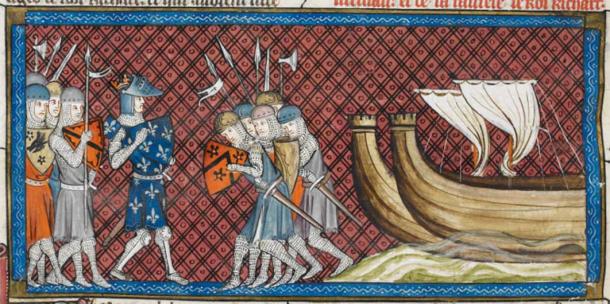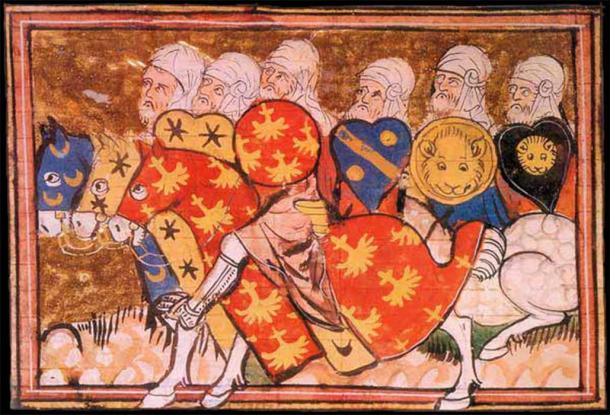
The Bloodless Sixth Crusade Led By The Excommunicated ‘Son Of Satan’ Frederick II
The conquest to free the Holy Land was a vital component of the late Middle Ages. Sacred to all three major religions, Christians, Jews and Muslims, control of Jerusalem was significant to each. The Holy Land had been won from the Saracens by the First Crusade in 1099 and after almost 88 years of occupation, it was lost again under the leadership of Sultan Salah al-Din (Saladin 1137-93). Four succeeding crusades had all failed miserably and for more than 40 years Christian pilgrims were barred from visiting the sacred places of the Bible including Jerusalem, Nazareth and Bethlehem. Under a peace agreement between Richard I, Coeur-de-Lion and Sultan Saladin, Christians still controlled a strip of the Mediterranean coast reaching from Tyre to Jaffa and the area around Antioch, called Outremer. Acre was the de facto capital of the Kingdom of Jerusalem.
Holy Roman Emperor Frederick II (1194-1250) held a cherished dream from his youth in Sicily to lead a crusade to free Jerusalem. When crowned King of the Germans at Aachen and again when crowned Holy Roman Emperor in Rome, Frederick vowed to Pope Honorius III that he would take the cross and open the Holy City for pilgrims to worship.

Philip II depicted arriving in Palestine (Public Domain)
Prelude to the Sixth Crusade
Frederick’s grandfather, Frederick Barbarossa (Red Beard) along with Kings Richard Lionheart and Philip Augustus of France had led the Third Crusade (1189-92). Their crusade included over 30,000 soldiers and pilgrims. Richard’s followers sailed from Messina and Philip’s crusaders left from Genoa; both traveled in a great armada and arrived in the Holy Land successfully. At age 67 Barbarossa, who had ruled German lands for more than 40 years, conducted a huge army of 3,000 knights and 15,000 foot soldiers over land across Hungary and the Byzantine Empire, but drowned crossing a river. His son Henry VI (Frederick’s father) took charge and continued the Crusade but many soldiers died or deserted completely discouraged. Displaying their devotion to their Emperor, Henry’s troops carried his father’s body to the Holy Land so he could fulfill his vow. To their consternation the three great European kings were not successful in their attempts to wrench Jerusalem from the formidable Sultan Saladin.

Saladin's troops (Public Domain)
After the failure of the disastrous Fourth Crusade, Pope Innocent III (r.1198–1216), called the Fifth Crusade and expected Frederick II to join this campaign. Pope Innocent died before the crusaders sailed but Pope Honorius III (r.1216-1227) took on the enormous project that included 30,000 troops and numerous pilgrims.
Like this Preview and want to read on? You can! JOIN US THERE ( with easy, instant access ) and see what you’re missing!! All Premium articles are available in full, with immediate access.
For the price of a cup of coffee, you get this and all the other great benefits at Ancient Origins Premium. And - each time you support AO Premium, you support independent thought and writing.
Dr Marion Dolan received her PhD from the University of Pittsburgh, majoring in Medieval manuscripts, minoring in Medieval architecture and history of astronomy. She is the author of several books including Astronomical Knowledge Transmission Through Illustrated Aratea Manuscripts and Decoding Astronomy in art and Architecture.
Top Image: Crusaders thirsting under the walls of Jerusalem by Francesco Hayez (1836-50) Web Gallery of Art (Public Domain)
By: Dr Marion Dolan














